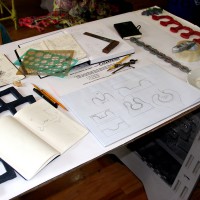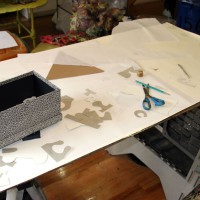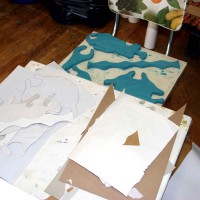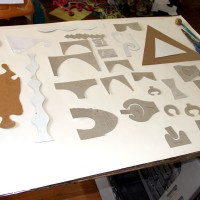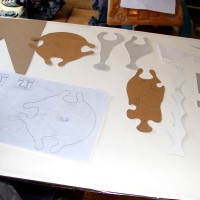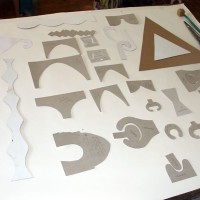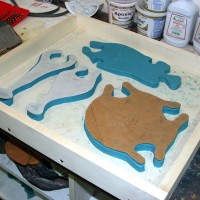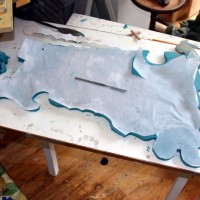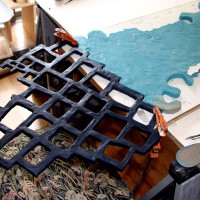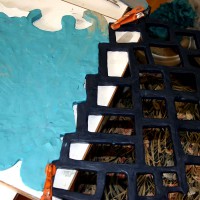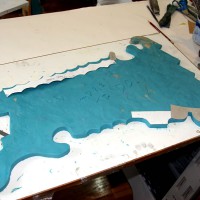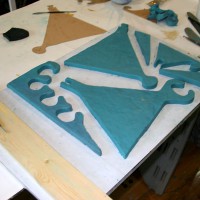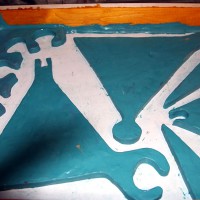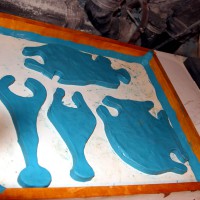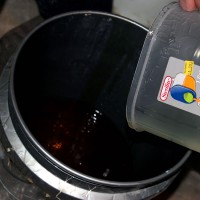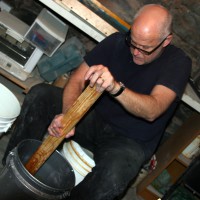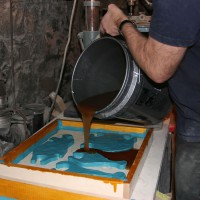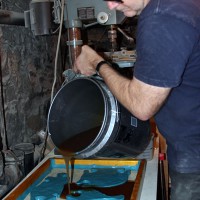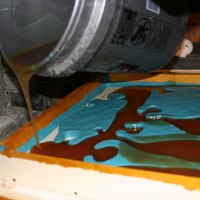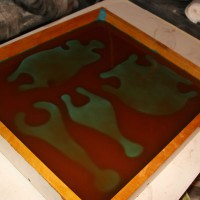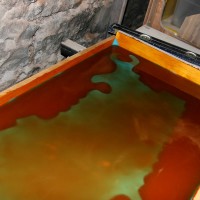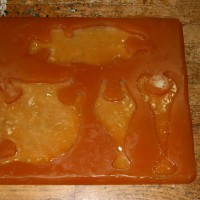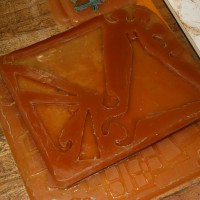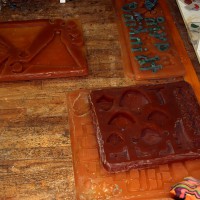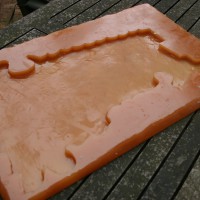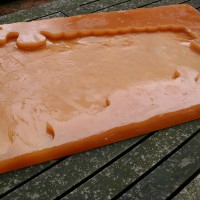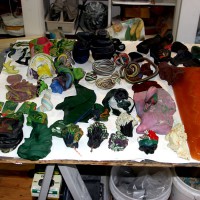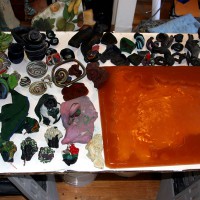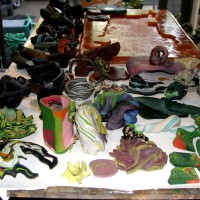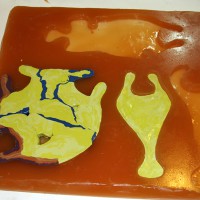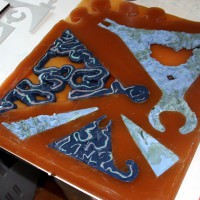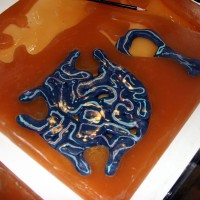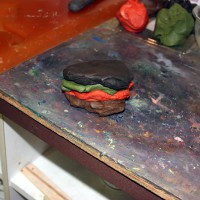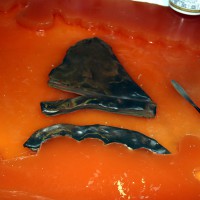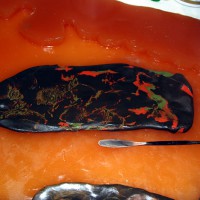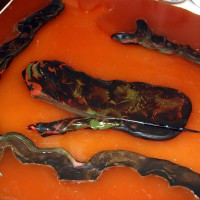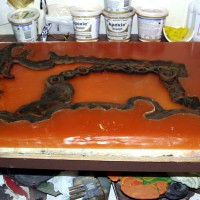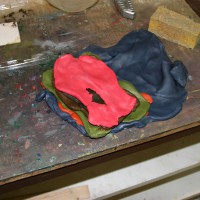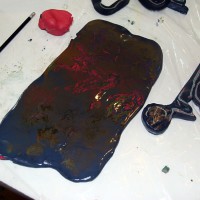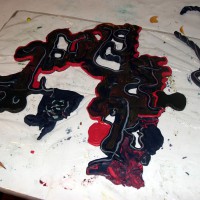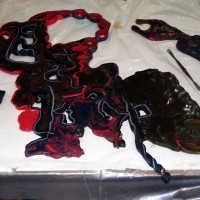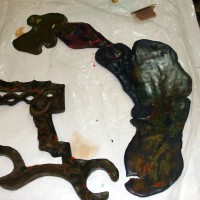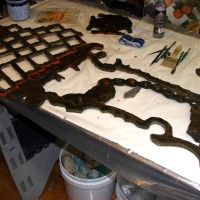I have begun a project to create a group of my sculpturally produced paintings. The project is to combine and recombine molded interlocking shapes, my leftovers – partially completed sketches, unfinished sculptures, unused parts – and freehand work. Each set of interlocking templates I have named using common paired names like Romeo and Juliet or Frick and Frack. I did this for practical reasons. I plan to re-use the template shapes over and over and I expect in the hustle and bustle of the studio I will lose one half of the pairs. Now if I have a part named “Romeo” I will be able to easily search and find “Juliet”. But as I was naming them I became taken with the idea and feel that these paired names are central to the project. In a direct yet playful way the paired names express some of my recurring themes – mutual dependence, symbiosis, the notion of “never one without the other”. And thinking of paired names and asking friends for them gets to something juicy and suggestive. Talking about combining “Nick and Nora”, “Tom and Jerry”, “Tristan and Isolde”, and “Batman and Robin” is much more fun and implies more about the underlying urge to work on these than to talk about “Interlocking Shapes”.
Collocation is a word from linguistics which defines a sequence of words that commonly go together – “companionable silence”, “crystal clear”, etc. Even though they are separate words their meaning is made from being together. When we are combining words to make sentences and paragraphs the words we are choosing are part of a continuum, according to linguists – ‘Free Combination’ to ‘Bound Collocation’ to ‘Frozen Idiom’. This spectrum, I find, is uncannily analogous to 3 ways of making in this project – freehand composition and fixed interlocking shapes and already produced leftovers. And so I have named the project Collocation.
The images below show the process up to this point. It is just beginning and there are no completed objects that have been produced. In these images you will see – Planning and Making Templates, Making Positives for Molds, Making the Rubber Molds, Organizing Some of the Leftovers, Using the Press Molds and Beginning to Piece the Parts Together. Hopefully it will give you an idea of where it is going.
